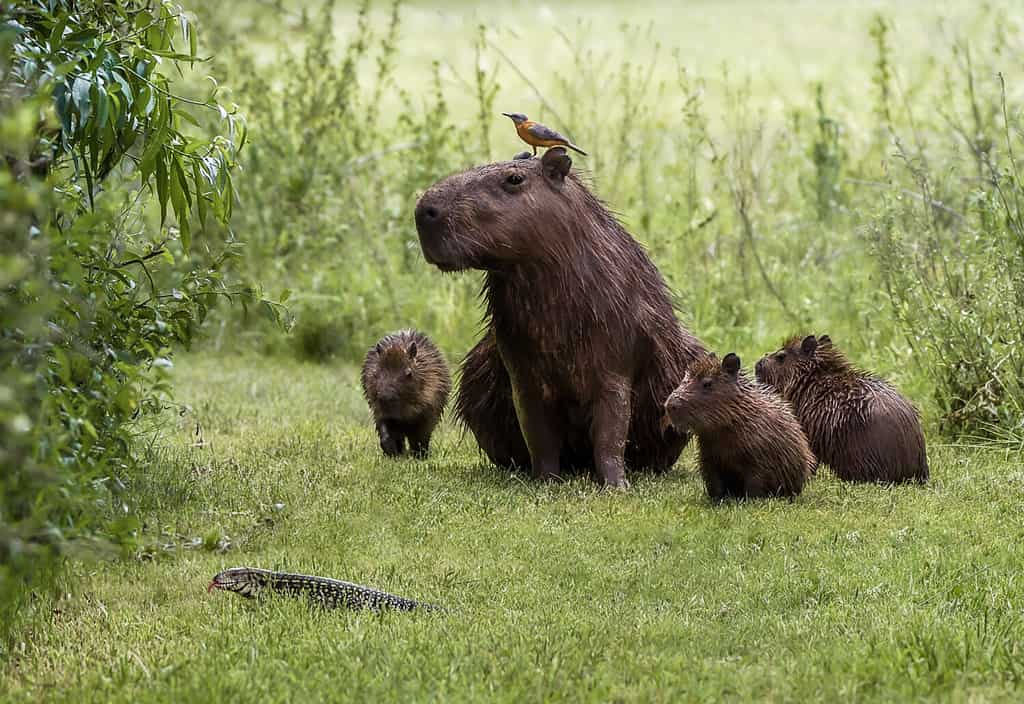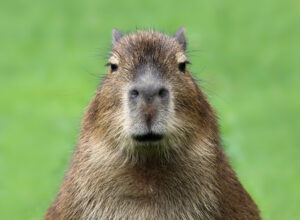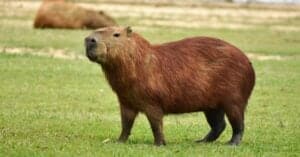Continue reading for our analysis...

In a ruthless environment like the wild, one small mistake can cost you everything. Unfortunately, the capybara in the above footage got entirely too close to a deadly apex predator. The jaguar, stalking the capybara, moved in at the right moment and launched her attack. The capybara did its best to escape, but the jaguar’s speed, timing, and power were too much to overcome. The jaguar appears to sink her teeth into the back of the giant rodent’s neck, dragging it away from the river and into the high grass where she would presumably finish the kill.
Jaguars are explosive killing machines that can weigh up to 350 pounds. However, their large size doesn’t slow them down. Jaguars can reach speeds up to 50 miles per hour. Additionally, these assassins have the strongest bite force among all big cat species across the globe. On the other hand, capybaras only have a few natural defenses apart from running, but they don’t measure up at a top speed of just 22 miles per hour. So, making mistakes like that against a jaguar was fatal. With that said, read on to learn about the typical jaguar diet, as well as the natural predators of the capybara.
Do Leopards Typically Hunt Capybaras?

Jaguars have the strongest bite force of all big cats in the animal kingdom.
©imageBROKER.com/Shutterstock.com
The jaguar primarily inhabits the tropical rainforests of Central and South America. The rainforests they roam are home to various species, and capybara are one of the jaguar’s preferred prey. Further, this big cat’s diet also includes tapirs, caiman, deer, fish, and turtles. Jaguars are elite swimmers and incredibly fast on land, so that is why they can maintain such a diverse diet. Coupled with their success on land and sea, jaguars are also excellent climbers. They are tough to escape on all terrains, as the capybara in the footage learned.
What Other Predators Must Capybaras Worry About?

Capybara can grow up to 154 pounds and are the world’s largest rodent.
©Marcel_Strelow/Shutterstock.com
While the capybara holds the title of the largest rodent in the world (weighing up to 154 pounds), it unfortunately has many limitations. With deadly predators like caiman, harpy eagles, anacondas, and jaguars, capybaras are at the mercy of deadly predators. These giant rodents inhabit grassy plains and rainforests, prime territory for predators who like to stalk in silence. As mentioned, their speed doesn’t always measure up, though they are exceptional swimmers. Since their natural habitat is swarming with threats around every corner, life isn’t always easy for the capybara.
Thank you for reading! Have some feedback for us? Contact the AZ Animals editorial team.







